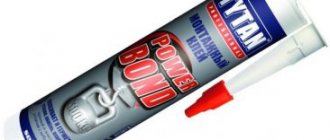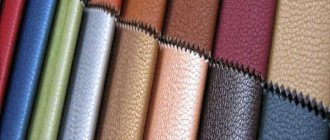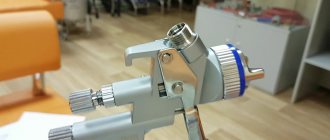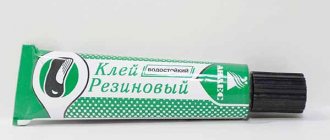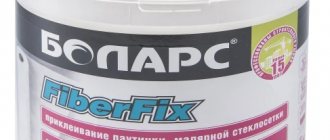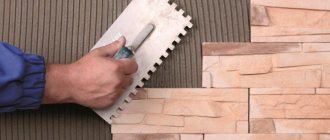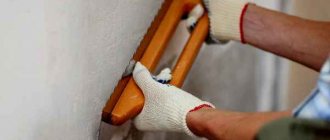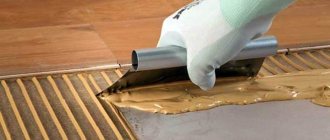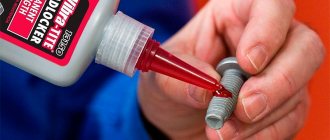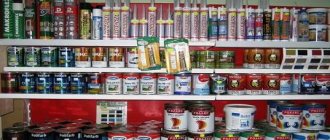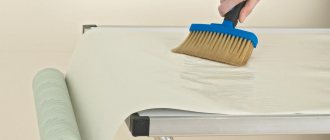Good glue is a necessary tool both in everyday life and in production. One of the most popular varieties is high-strength rubber glue, which allows you to obtain reliable and accurate connections. This rubber-based material is great not only for gluing rubber, but also for much more. It is used to repair shoes, tires, inflatable boats, leather goods, burst bicycle tires, leather goods, plastic, and metal. Despite some unpleasant odor, the rubber adhesive formula is environmentally friendly, which allows you to work without a respirator or other personal protective equipment.
Rubber adhesives are indispensable in various fields of economics.
Composition and properties of rubber glue
The composition of rubber adhesive is very close to natural rubber sap. There are different types of consistency:
- viscous;
- liquid.
But elastic elastomers (natural or synthetic) are present in any case. Also, other substances (fillers and solvents) are added to natural rubber adhesive, giving the final product various properties:
- ethyl acetate with nefras - have a very pungent odor;
- polystyrene - makes the connection more durable, but somewhat reduces its flexible properties;
- phthalates and lanolins – improve the plastic properties of the adhesive joint;
- synthetic latex – increases the elasticity of the connection;
- various resins, metal oxides, amines, sulfur are necessary for vulcanization, as a result of which the substance acquires hardness but retains elasticity.
Polyurethane adhesive accordingly contains polyurethane. Among these varieties there are substances so powerful that they can be used for membrane vacuum pressing.
Common alcohol (ethanol) and the secondary amine diethylamine are often used as consistency stabilizers.
The concentration of rubber cement is the amount of rubber it contains. These substances come in different types, so the viscosity of adhesives may differ at the same concentration. Plasticization (melting) reduces viscosity and reduces the need for solvent.
Types of glue for rubber
Depending on the characteristics of the raw materials, adhesives are divided into the following types:
- based on natural rubber - an ideal quick-drying adhesive for leather, as well as various fabrics, cardboard, paper;
- based on chloroprene - recommended for connecting rubber to wood, glass, plastic;
- Nitrile butadiene is an excellent waterproof adhesive for rubber;
- organosilicon - tetrabutoxylan is required as a hardener, it is used only to bond surfaces made of homogeneous rubber;
- synthetic styrene butadiene - industrial version, not used in everyday life;
- Two-component polyurethane glue is the main product in the shoe industry.
High-quality waterproof rubber adhesive can be in contact with moisture for a long time without losing the strength of the connection and the plasticity of the seam.
Rubber adhesives grade 88
Brand 88 includes a whole range of varieties. These include:
- 88-CA is widely used for the production and repair of shoes;
- 88-NP – for low and high temperatures;
- 88-Lux – universal, widely used in the production of furniture and household appliances;
- 88-N – for connecting vulcanizing rubber to a wide range of different materials, including glass; requires dilution with benzene;
- 88-NT – capable of bonding a wide variety of materials;
- 88-M – increased tear resistance;
- 88-Metal – super-strongly holds metals together;
- 88-KR – is especially often used in the automotive industry.
The universal properties of the brand are given by the composition of nairite, phenol-formaldehyde resin, nefras and a number of other substances. All subspecies of the 88th series are heat-resistant and frost-resistant. Rubber is firmly bonded to a huge number of materials, including cement, concrete, metals and even glass.
This brand is considered one of the best adhesives for rubber.
Due to its powerful adhesive properties, the 88 line is widely used in professional environments: in construction, automotive and other industries.
Rubber Cement
The strength characteristics of this product are somewhat lower than those of others. Nevertheless, when the question arises of what kind of glue to glue shoes with, it is most often chosen.
The surfaces to be joined must be carefully prepared and cleaned of grease and dirt. Irregularities do not affect the quality of the solder joint.
Rubber Cement hardens quickly. The resulting seam has properties identical to rubber and is not afraid of high humidity.
Loctite
This cyanoacrylate product answers the question of how to quickly glue rubber. With its help, the connection can be made almost instantly. Ideal for large repairs and small joints. Polymerization occurs almost immediately after application to the surface. The parts must be pressed tightly against each other.
The connections can withstand high tensile and shear loads.
Loctite has maximum adhesion to plastic. It holds fiberglass together well, but cannot bond glass. When working with a number of substances, it requires the use of special primers that improve adhesion.
Rubber glue 4508
High-quality elastic rubber adhesive is recognized as one of the best superglues. Suitable even for the manufacture and repair of watercraft and fishing clothing. With its help, you can seal the rubber and install a patch with maximum reliability.
The seams are moisture-resistant, elastic, and do not allow water to pass through.
The hardened adhesive layer has the following properties:
- increased water resistance;
- good resistance to stretching and vibration;
- the seam does not lose strength at temperatures up to +50°C.
Before application, the surface must be thoroughly degreased.
Viscosity can be changed depending on the task. Nefras is something that can be used to dilute rubber glue of this brand.
Rubber moment
This rubber glue is one of the best. It is suitable for any type of rolled rubber coating, including foam. The soldering turns out almost perfect. The strength of the connection is maintained at high temperatures up to +100°C.
This rubber glue dries even with the lid tightly closed. Therefore, if the tube has been opened, then soon all its contents will harden.
Rubber “Moment” must be kept away from fire, as the substance is flammable.
Adhesive rubber mastic KN-2
The base is synthetic rubber. The mastic is intended for construction, repair and finishing work. Widely used to fasten flooring, roofing materials, wall panels, drywall, waterproofing materials.
The frozen mastic acquires the properties of rubber. The color of the seam is black or yellow-brown.
When the question arises of how to glue parquet or bitumen shingles, you can safely opt for KN-2 mastic. This substance:
- has good adhesion;
- suppresses the development of mold;
- does not attract insects;
- tolerates moisture well;
- actively fills cracks and cracks.
The fastening is very strong, but quite elastic.
Rubber adhesive grade A
This is a good quick-drying glue for rubber, so it is used for sealing car tire tubes, repairing household items, and creating various crafts. In addition, it is a powerful sealant. Can be applied to the surface without prior degreasing.
Rubber glue grade A easily forms a neat, elastic seam.
Resistant to moisture, oil- and gasoline-containing substances.
Radical
Durable and multi-functional repair adhesive. Can be used in the repair of boat equipment, fins, wetsuits, and any floating structures and equipment. The color is usually black.
Radical has powerful adhesion to various substances.
The hardened joint is able to withstand high pressure, exposure to fresh and salt water, and retains its properties in the temperature range from –40 to +70°C.
Kernil
A cyanoacrylate substance that provides a powerful compound. It sets very quickly and hardens instantly. Due to its excellent adhesion to a wide variety of substances, it is used in the following cases:
- connection of boards;
- production of electrical parts;
- production of plastic products;
- gluing fabrics, leather, foam rubber.
Kernil has an important property: it does not change the color of the surfaces being bonded.
Other types
The number of types of rubber adhesives is very large, and each type has its own characteristics. For example:
- seams made with KR-5-18 glue do not dissolve even with prolonged exposure to petroleum products;
- SinTex MF red is specifically aimed at furniture production;
- epoxy adhesives have a wide range of applications, from simple household tasks to aircraft construction;
- transparent superglue IRFIX Super Glue 502 is resistant to ultraviolet rays, therefore it is ideal for EPDM-based materials used in fastening display cases, windows, and facade finishing.
Silicone rubber-based products are excellent at bonding ceramics, glass and other complex materials, but they can cause corrosion on ferrous metals.
In difficult times you can’t do without glue
You need to select exactly the composition that will withstand all tests and will not let you down - one whose properties will meet all the requirements.
Requirements often have a wide range, which is why manufacturers offer a lot of materials that will restore the functionality of a damaged item. Unfortunately, there is no universal offer due to the variety of purposes of things. Therefore, before purchasing, you should carefully consider what you want to achieve from the adhesive composition, so as not to become a victim of carelessness and disappointment later.
Carefully reading the instructions will help you avoid misuse of glue. And only then should you make purchases on the construction market.
Most common requirements
They are standard: reliability and quality of connection of parts. Construction Markets will offer you a huge assortment for this. Because rubber can be glued together with glue for metal and adhesive material for plastic. We carefully read the instructions on the package, all the characteristics indicated there and decide: do we need this?
Perhaps you would like to glue rubber to metal, glue it to leather, or other materials. Just first find the composition on the packaging of which this will be guaranteed to you. Otherwise, you can easily make a wrong choice. There is no instruction on gluing the material you need - it’s better to look for another one than to become a victim of a rash decision.
Expectations and reality
I really want them to match! And your rubber boats, car tires, mattresses for sleeping or swimming, tents and wetsuits, balls and rubber shoes could serve you for a long time.
This means that the adhesive composition must meet the following requirements:
- Firmly adhere the surfaces.
- Fill all microcracks and voids.
- Be resistant to humid environments, freezing and high temperatures.
- Ensure connection strength.
- Free the seam from delamination.
- Do not dissolve when exposed to aggressive environments.
- Ensure product flexibility.
- Have a transparent structure when required.
- There should be no unpleasant, pungent odors.
Found something similar? Congratulations! In your hands is the best glue ever invented by specialists.
Features of gluing rubber to metal, wood, glass, concrete, plastic, fabric and PVC
Connecting dissimilar materials increases the complexity of the work. For each pair, it is better to select the glue that is designed specifically for this purpose. Then the seam will be more reliable than when using universal compounds.
When gluing, it is important to strictly follow the instructions that are always included with the package.
The recommended surface treatment must be carried out, otherwise even the most powerful glue will not give the expected result.
Specifications
The key characteristics of the glue include tensile strength, operating temperature range without loss of performance properties, setting time and complete drying.
All adhesive compositions made on the basis of rubber must meet the following requirements:
- resistance to moisture;
- absence of toxic compounds;
- operating temperature range from – 50 to +70 degrees Celsius.
- maintaining the integrity of the surface of the parts being connected;
- protection of the seam from the effects of corrosion, rotting, etc.
As a rule, all the data necessary for the consumer is applied to the packaging in which the adhesive composition is packaged.
Instructions for using rubber glue
You can use the cold or hot method:
- The cold method is very simple. The surface is cleaned, degreased, and any uneven surfaces are lightly sanded. Apply a layer of adhesive mass and press the parts to be joined tightly against each other. If you need to press harder, use a press. Leave the product in the air until the seam has completely hardened. Sometimes this takes several days.
- The hot method speeds up the process, but is more labor-intensive. The prepared surfaces are heated to a high temperature (it is recommended to use a hair dryer), glue is applied, the parts are pressed and left in a fixed state until the seam hardens.
When using the hot method, you need to use a respirator to protect yourself from toxic fumes.
With any method, you must strictly follow the instructions that come with the packaging of the selected glue.
What do the professionals advise?
- Pay close attention to the expiration date indicated on the glue packaging. The composition usually does not withstand long-term storage and at best it will thicken, at worst it will dry out completely, and a universal thinner has not yet been invented. Don't create difficulties for yourself! Check out the question of what shelf life the manufacturer guarantees you.
- Before gluing rubber to rubber, check the room temperature. It’s bad if your temperature is below +5 °C.
- We hope you remember that degreasing of surfaces that are to be bonded is usually required? Also take care to remove dirt, dust and keep the parts to be glued dry.
- It is better if, before the joining procedure, you sand the parts with sandpaper. We follow the following sequence: first we sand, then we degrease the parts using white spirit, acetone, gasoline, solvent 646 or other easily evaporating liquid.
- It is recommended to apply the glue with a brush, and in the case of a thick mixture, with a spatula, creating a thickness of the glue layer of about 2 mm. Boats and shoes, however, are an exception here. For them, 1 millimeter is enough. But! We first clean their surfaces, apply a layer of glue, cover it with gauze, press it carefully using a spatula, cover it with glue again and press the two surfaces tightly.
- We remove all excess glue deposits with a knife or other sharp object, a spatula, for example.
- Take the time to hold the glued product under pressure. This takes several hours.
Remember: glue dries less well in low humidity. Surfaces usually set within 30 minutes. And after three days you are guaranteed complete hardening.
How to dissolve or dilute glue for rubber products
The better the glue, the more difficult it is to dissolve. You can try treating fresh stains with vegetable oil and vinegar. These natural substances are actually powerful solvents.
A paste of 2 parts food water and 1 part water is also capable of dissolving very strong adhesive compounds.
One of the most universal solvents is acetone. Also, to dissolve particularly persistent compounds, gasoline, turpentine, and acidic compounds are used to clean plumbing equipment.
If you need to change the viscosity of the glue before application, then for dilution you need to take only the substance specified in the instructions.
When starting to work with glue for rubber coatings or any other type, it is very important to follow technology and accuracy. It is these aspects that have the greatest impact on the strength and durability of the connection.
